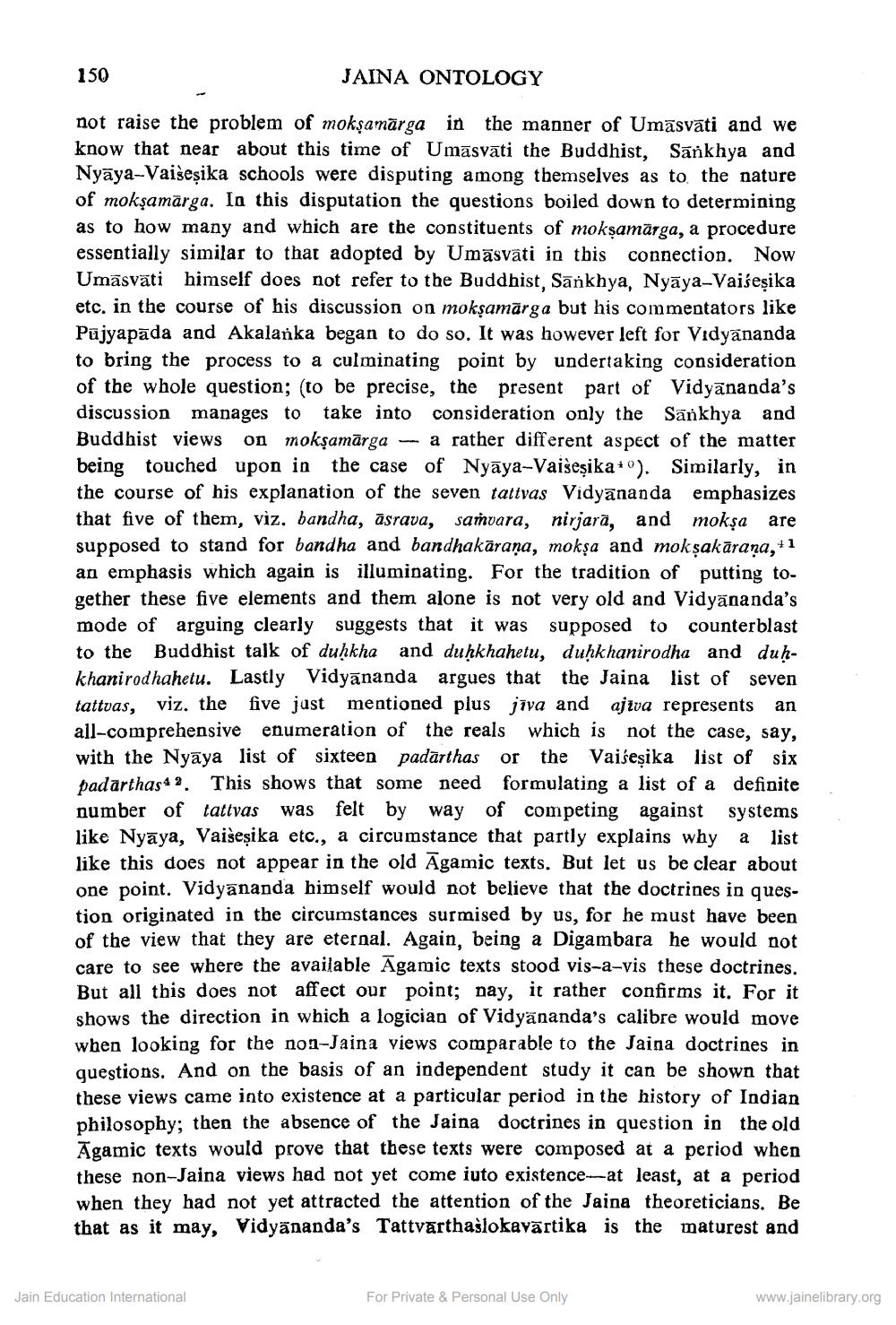________________
150
JAINA ONTOLOGY
not raise the problem of mokşamārga in the manner of Umāsvāti and we know that near about this time of Umāsvāti the Buddhist. Sänkhy Nyāya-Vaiseșika schools were disputing among themselves as to the nature of mokşamärga. In this disputation the questions boiled down to determining as to how many and which are the constituents of mokşamärga, a procedure essentially similar to that adopted by Umāsvati in this connection. Now Umäsväti himself does not refer to the Buddhist, Sankhya, Nyāya-Vaiseșika etc. in the course of his discussion on mokşamärga but his commentators like Pujyapāda and Akalanka began to do so. It was however left for Vidyānanda to bring the process to a culminating point by undertaking consideration of the whole question; (to be precise, the present part of Vidyānanda's discussion manages to take into consideration only the Sankhya and Buddhist views on mokşamārga - a rather different aspect of the matter being touched upon in the case of Nyāya-Vaišeşika"). Similarly, in the course of his explanation of the seven tattvas Vidyānanda emphasizes that five of them, vìz, bandha, āsrava, samvara, nirjara, and mokşa are supposed to stand for bandha and bandhakāraṇa, mokşa and moksakārana, +1 an emphasis which again is illuminating. For the tradition of putting together these five elements and them alone is not very old and Vidyānanda's mode of arguing clearly suggests that it was supposed to counterblast to the Buddhist talk of duhkha and duhkhahetu, duhkhanirodha and duhkhanirodhahetu. Lastly Vidyānanda argues that the Jaina list of seven tattvas, viz. the five just mentioned plus jīva and ajiva represents an all-comprehensive enumeration of the reals which is not the case, say, with the Nyāya list of sixteen padārthas or the Vaiseșika list of six padarthast 2. This shows that some need formulating a list of a definite number of tattvas was felt by way of competing against systems like Nyāya, Vaišeșika etc., a circumstance that partly explains why a list like this does not appear in the old Agamic texts. But let us be clear about one point. Vidyananda himself would not believe that the doctrines in question originated in the circumstances surmised by us, for he must have been of the view that they are eternal. Again, being a Digambara he would not care to see where the available Agamic texts stood vis-a-vis these doctrines. But all this does not affect our point; nay, it rather confirms it. For it shows the direction in which a logician of Vidyananda's calibre would move when looking for the non-Jaina views comparable to the Jaina doctrines in questions. And on the basis of an independent study it can be shown that these views came into existence at a particular period in the history of Indian philosophy; then the absence of the Jaina doctrines in question in the old Agamic texts would prove that these texts were composed at a period when these non-Jaina views had not yet come iuto existence at least, at a period when they had not yet attracted the attention of the Jaina theoreticians. Be that as it may, Vidyananda's Tattvarthašlokavārtika is the maturest and
Jain Education International
For Private & Personal Use Only
www.jainelibrary.org




